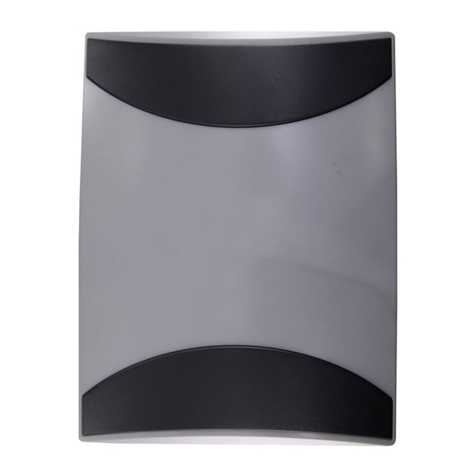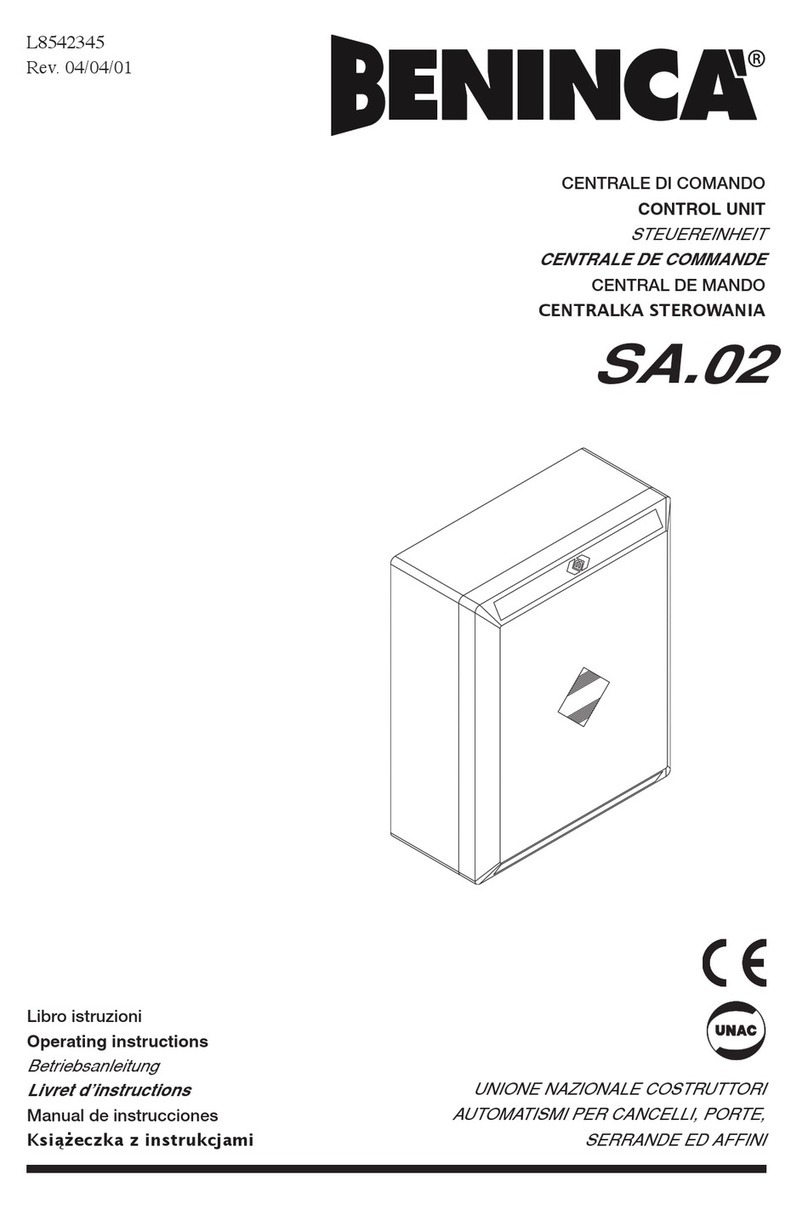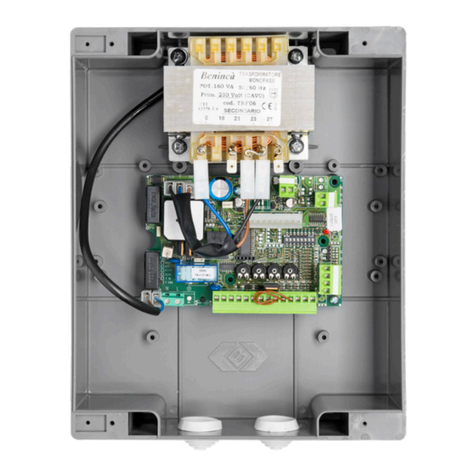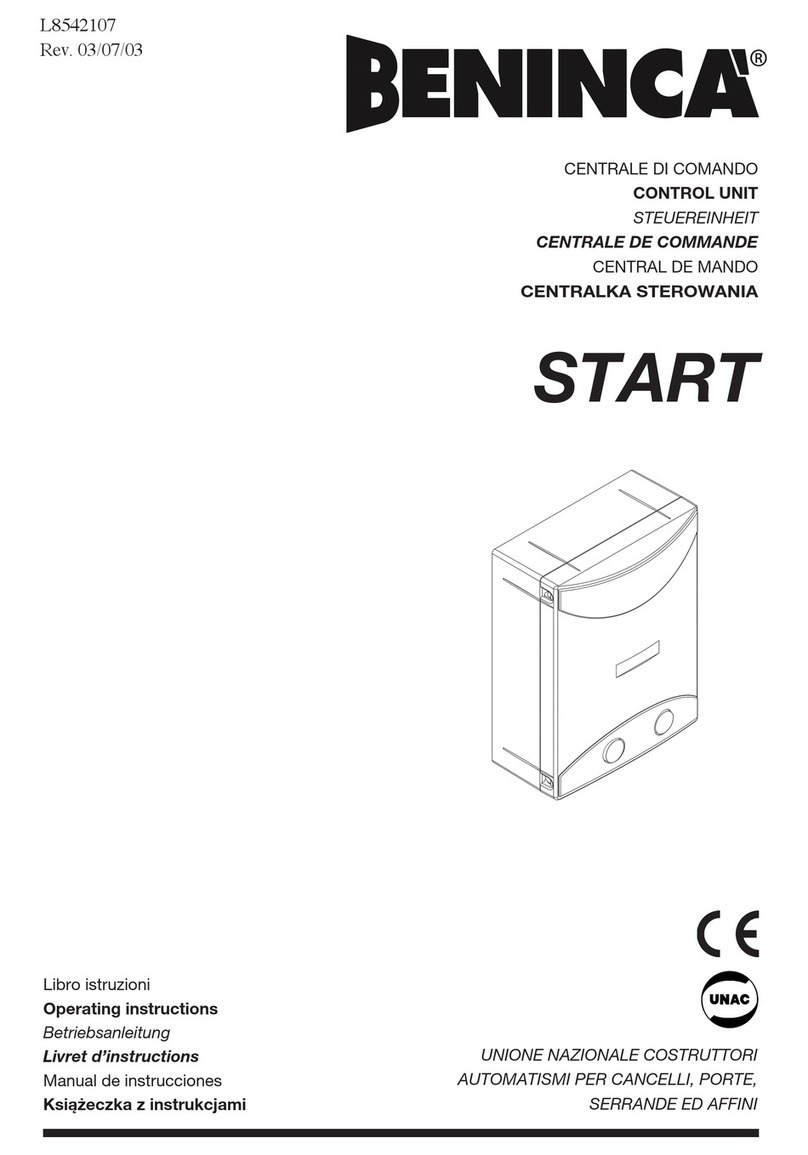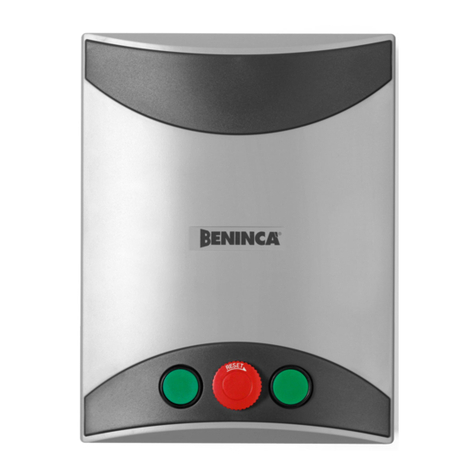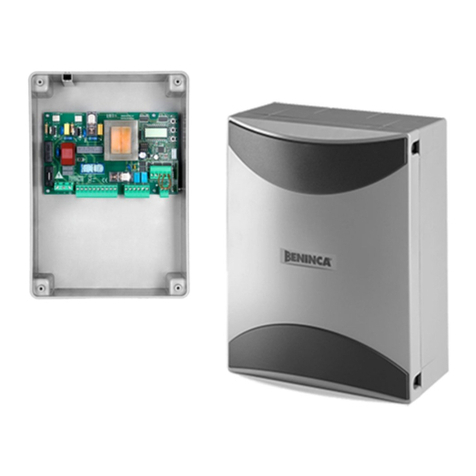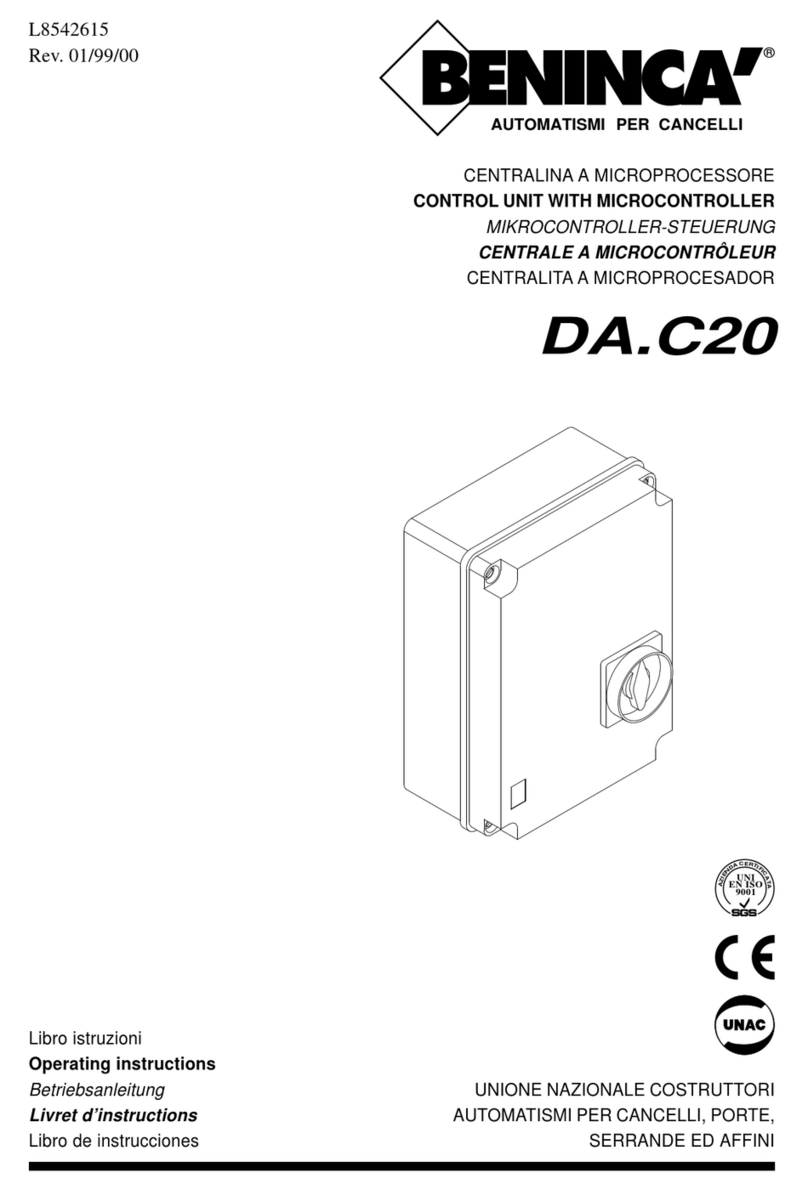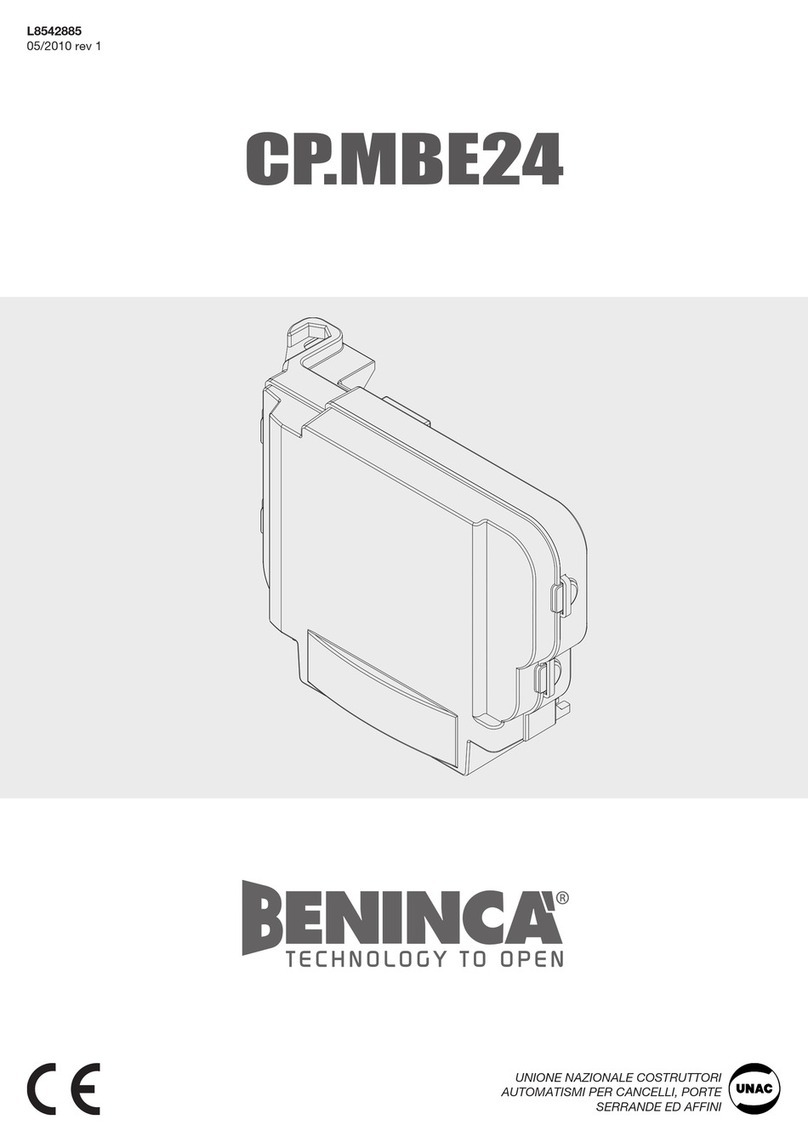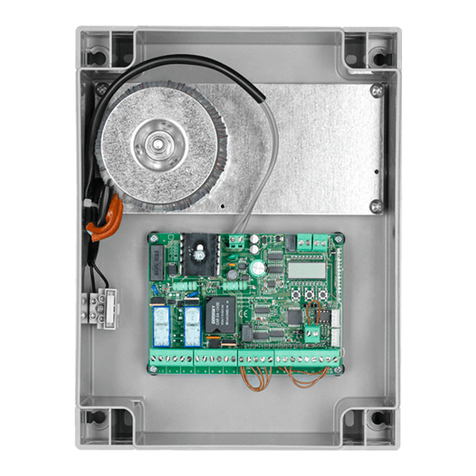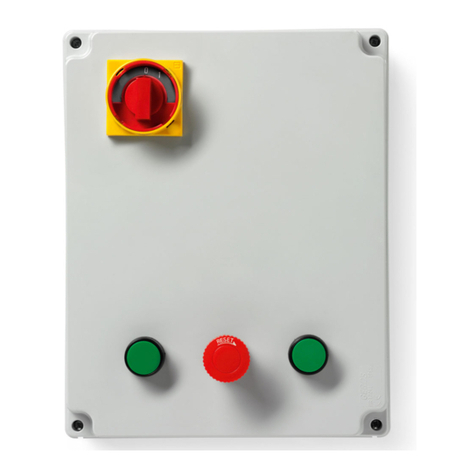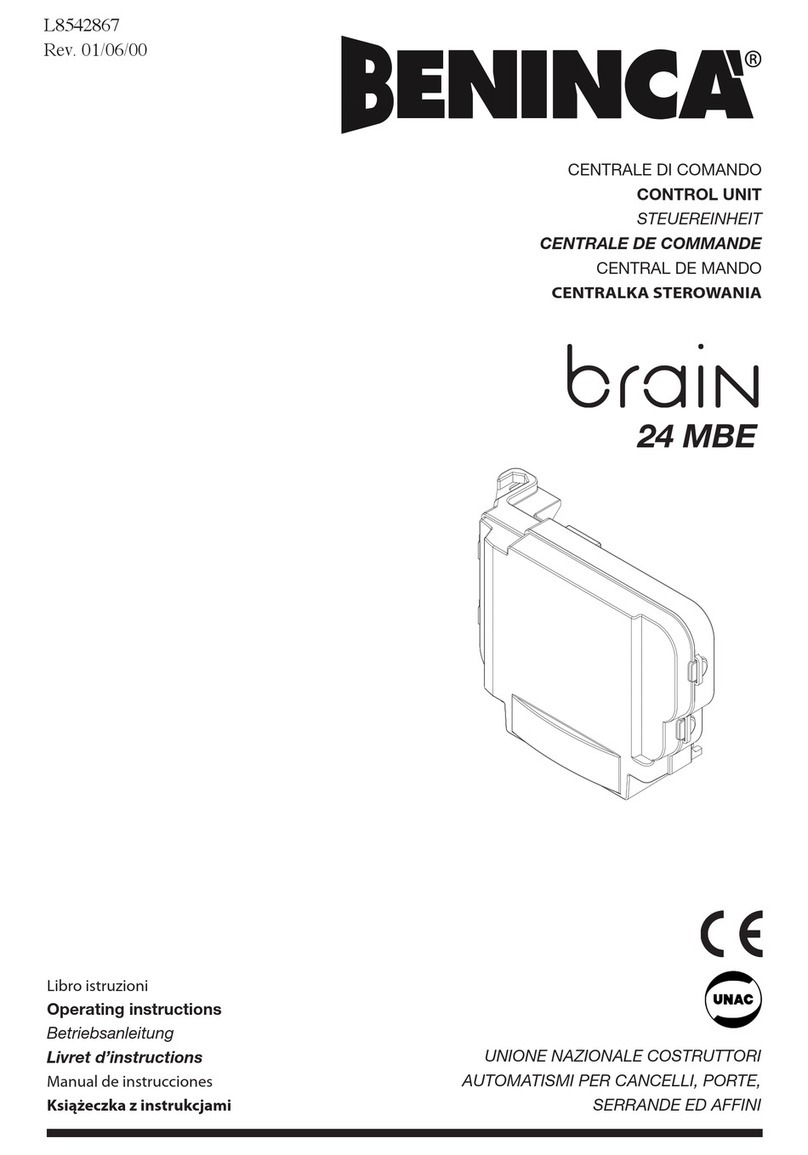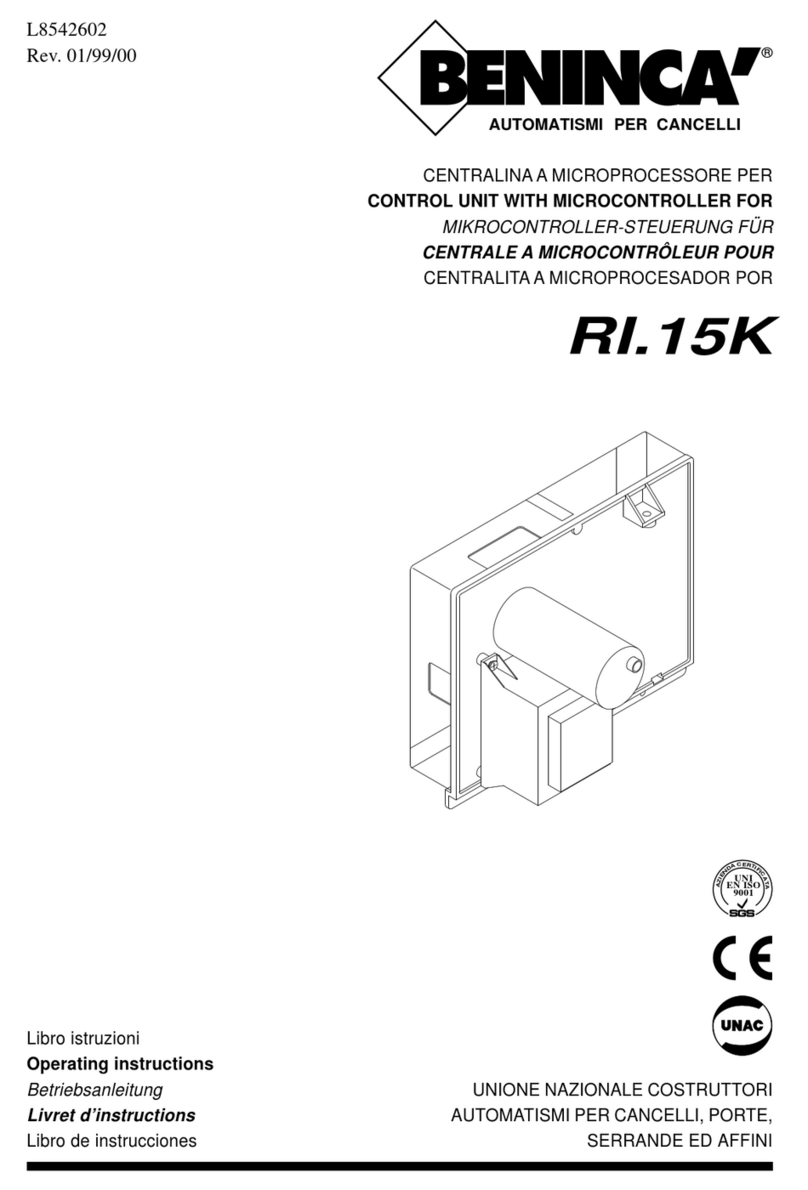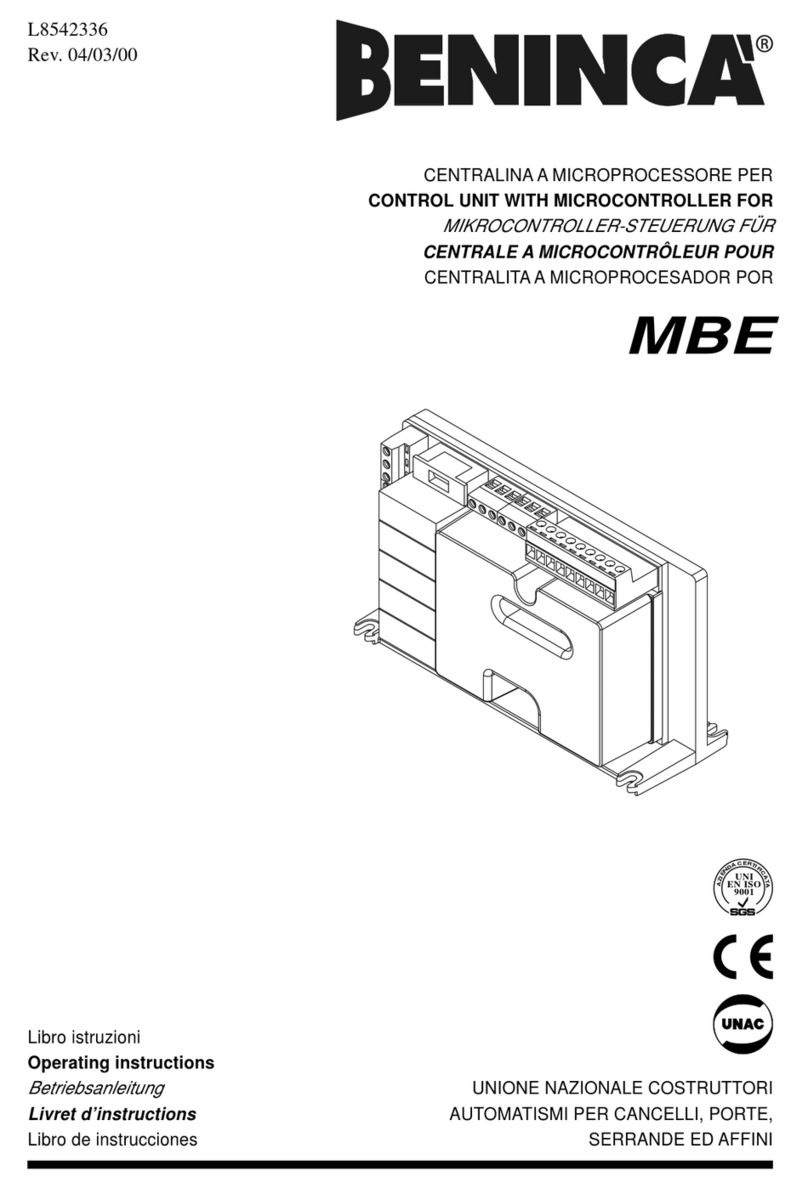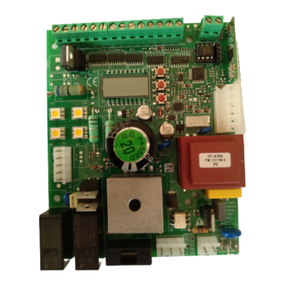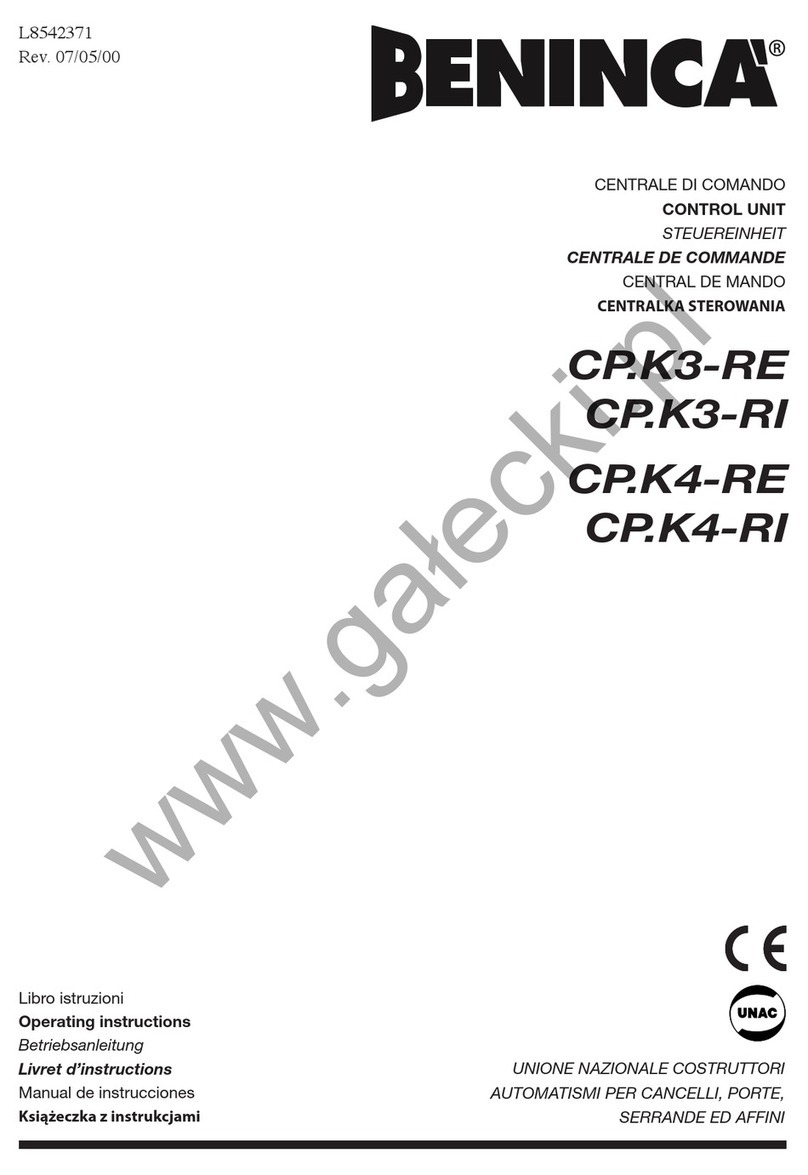
30
4) TO ACCESS PROGRAMMING
1 – Press the button <PG>, the display goes to the first menu, Parameters “PAR”.
2 – With the <+> or <-> button, select the menu you want.
3 – Press the button <PG>, the display shows the first function available on the menu.
4 – With the <+> or <-> button, select the function you want.
5 – Press the button <PG>, the display shows the value currently set for the function selected.
6 – With the <+> or <-> button, select the value you intend to assign to the function.
7 – Press the button <PG>, the display shows the signal “PRG” which indicates that programming has been completed.
12.1) RUN SELF-LEARNING AND ANTI-CRUSHING DEVICE SETTING
When operator assembly and wiring is completed, parameters and logic are programmed, self learning allows the operator to learn the
stroke and torque.
Enter menu Auto and press the button < PGM >, PUSH will be displayed.
Press again the button < PGM >: self-learning is beginning: PRG will be displayed, and the control panel completes some opening/
closing cycles.
When the procedure is completed OK will be displayed.
This procedure can be followed from any position of the gate/door leaf and can be stopped at any moment by pressing keys <+> and
<-> at the same time, or through the activation of STOP/PHO/PHA/DAS/PP/PED inputs.
If the procedure is not successful, the wording ERR appears. Check that no obstacles or frictions are present.
After the AUTOSET procedure it is necessary to check the value of the operating forces according to the European Standards EN12445
and EN12453. If the value of the force is too high it is mandatory to install a safety edge which complies to the standard EN12978.
Notes:
Pressing <-> with the display turned off means an impulse of P.P.
Simultaneously pressing <+> and <-> from inside a function menu allows you to return to the previous menu without making any chang-
es.
Hold down the <+> key or the <-> key to accelerate the increase/decrease of the values.
After waiting 30s the control unit quits programming mode and switches off the display.
5) PARAMETERS, LOGIC AND SPECIAL FUNCTIONS
The tables below describe the individual functions available in the control unit.
PARAMETERS (PAR)
MENU FUNCTION MIN-MAX-(Default) MEMO
TCA Automatic closure time. It is activated only with “TCA” logics :ON
At the end of the preset time, the control unit starts a new closing operation. 1-240-(40s)
Tped The passage left open by the door/gate leaf during the partial opening controlled
by the pedestrian inoput, is adjusted.
The value is expressed in percentage on the aggregate value of the stroke.
5-100-(20%)
tsmO Braking during OPENING is adjusted.
The value is expressed in percentage on the aggregate value of the stroke.
See section “Speed and slowdown settings”*.
10-100-(20%)
tsmc Braking during CLOSURE is adjusted.
The value is expressed in percentage on the aggregate value of the stroke.
See section “Speed and slowdown settings”*.
10-100-(20%)
FSTo
The OPENING speed is adjusted.
IMPORTANT: Change the values of this parameter only by keeping to the
weight limits shown in Table 1.
See section “How to adjust speed and braking”.
20-120-(45)
FSTc
The CLOSURE speed is adjusted.
IMPORTANT: Change the values of this parameter only by keeping to the
weight limits shown in Table 1.
See section “How to adjust speed and braking”.
20-120-(45)
sldo Adjusts the slowdown speed during the opening phase.
See section “Speed and slowdown settings”*. 10-40-(25)
sldc Adjusts the slowdown speed during the closing phase.
See section “Speed and slowdown settings”*. 10-40-(25)
PMO The torque applied to motor 2 in the opening* phase is adjusted. 1-99-(70%)
PMC The torque applied to motor 2 in the closing* phase is adjusted. 1-99-(70%)
sEav
The trigger time of the anti-crash device (Amperometric) is adjusted during the
normal speed phase*.
0:Off-99: maximum sensibility - 1: minimum sensitivity
0-90-(1%)


